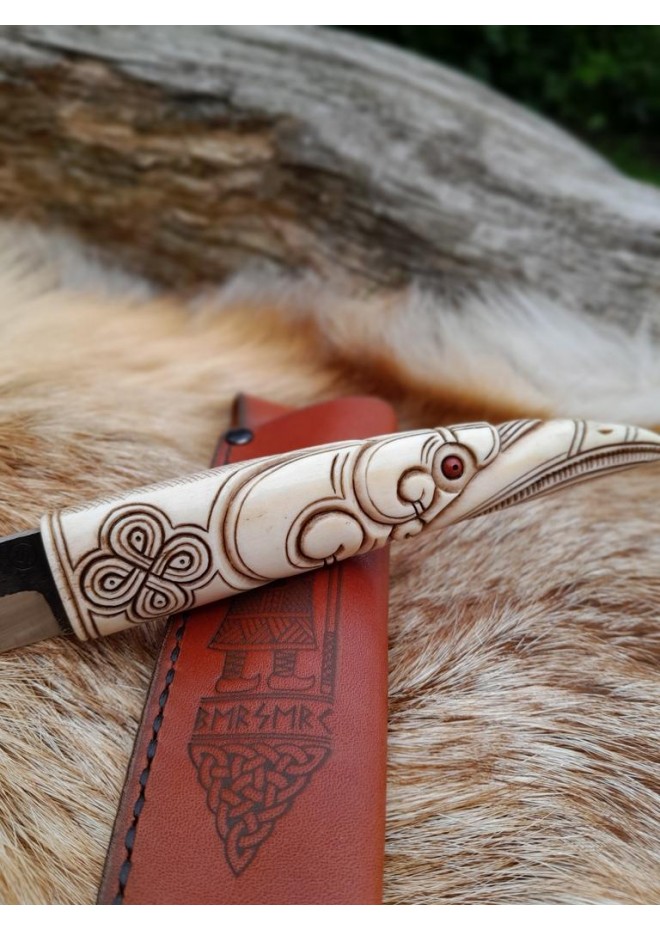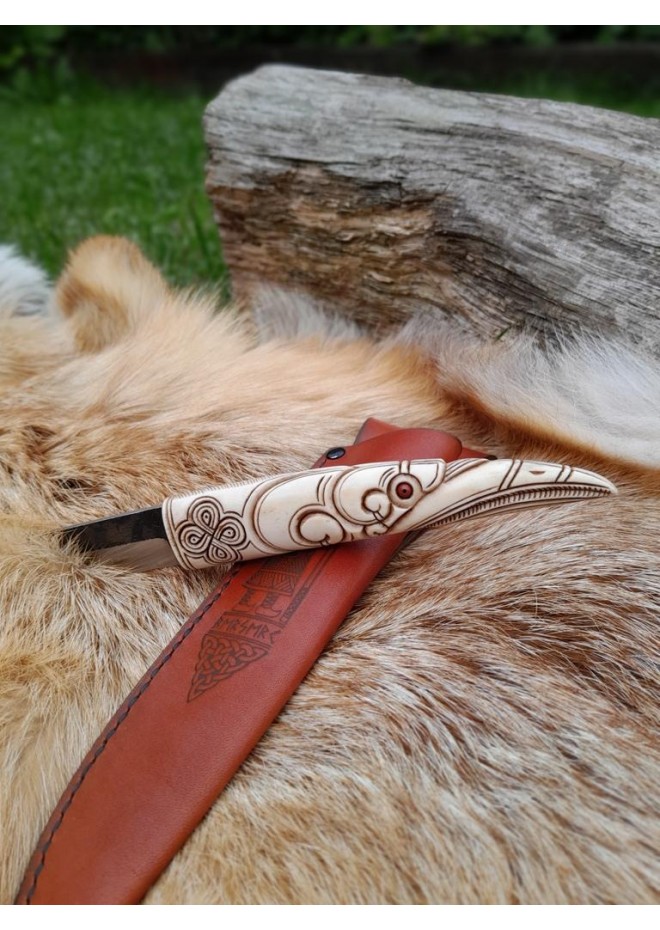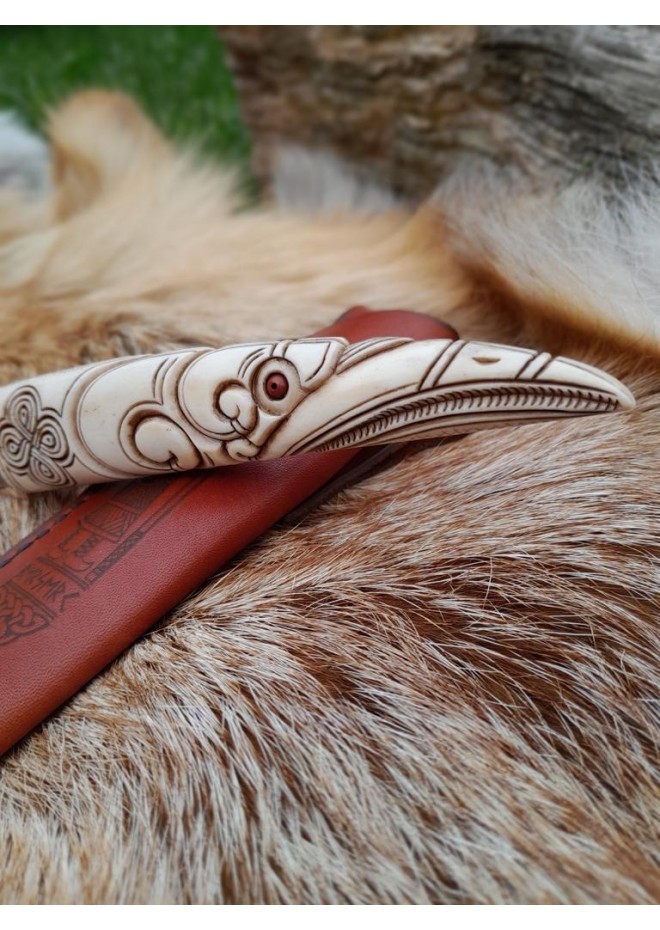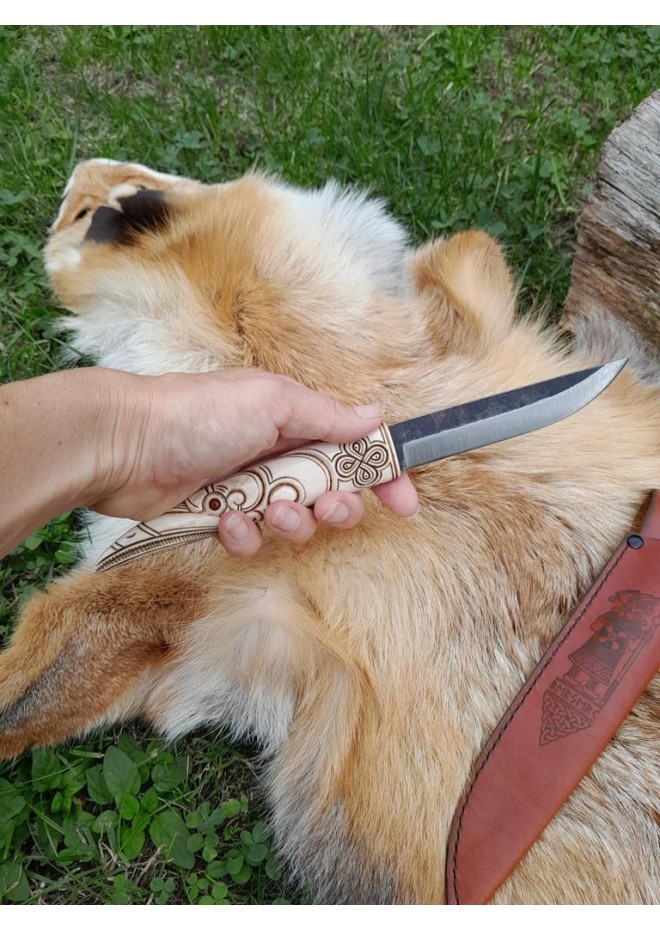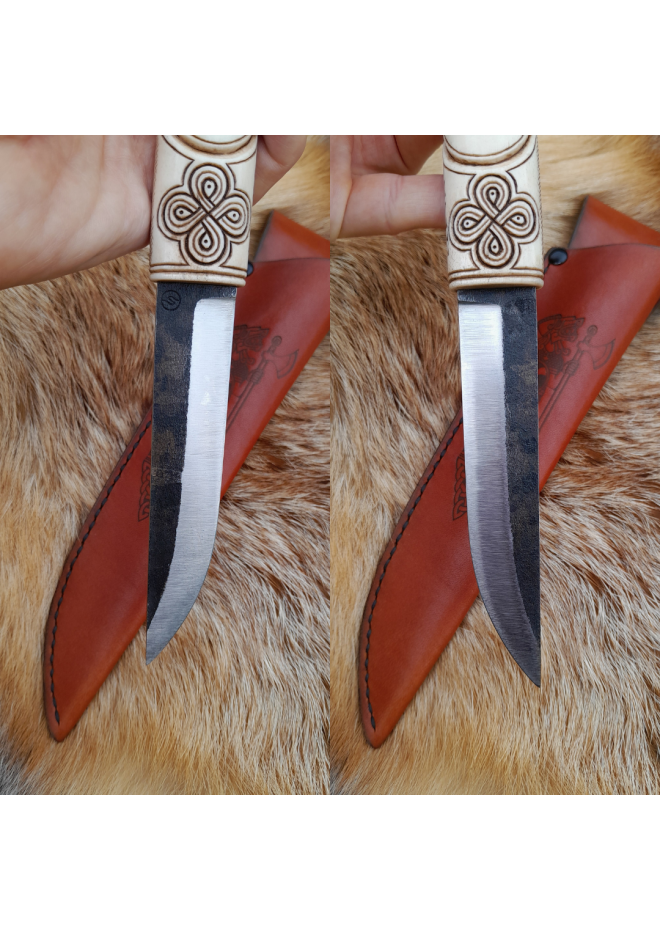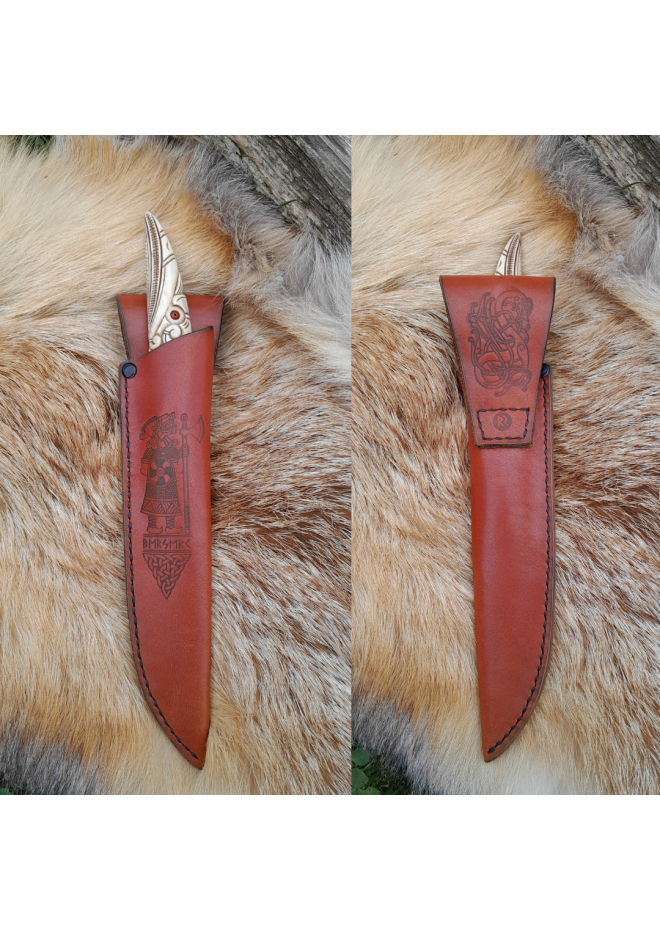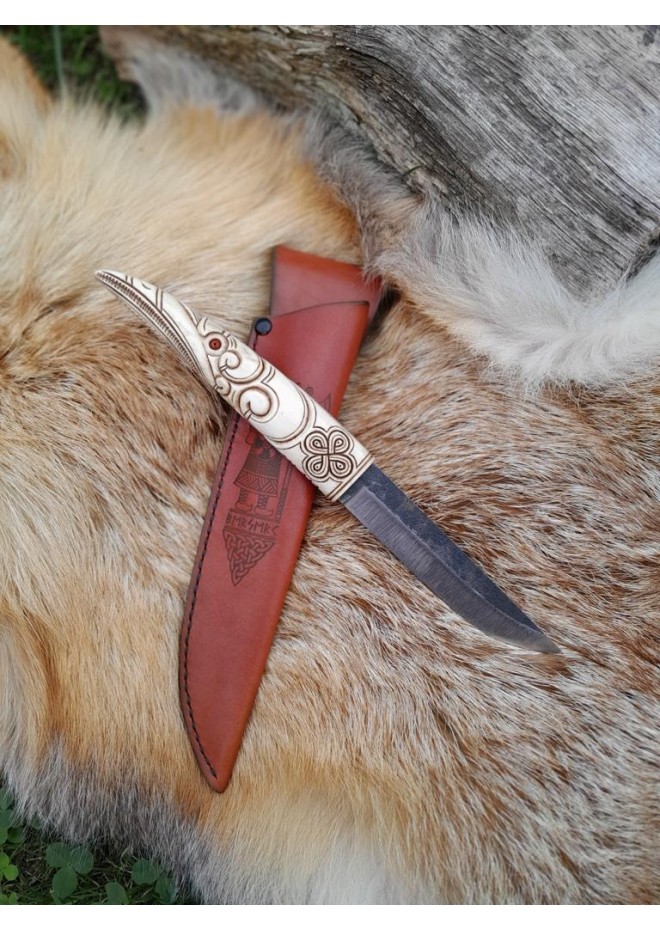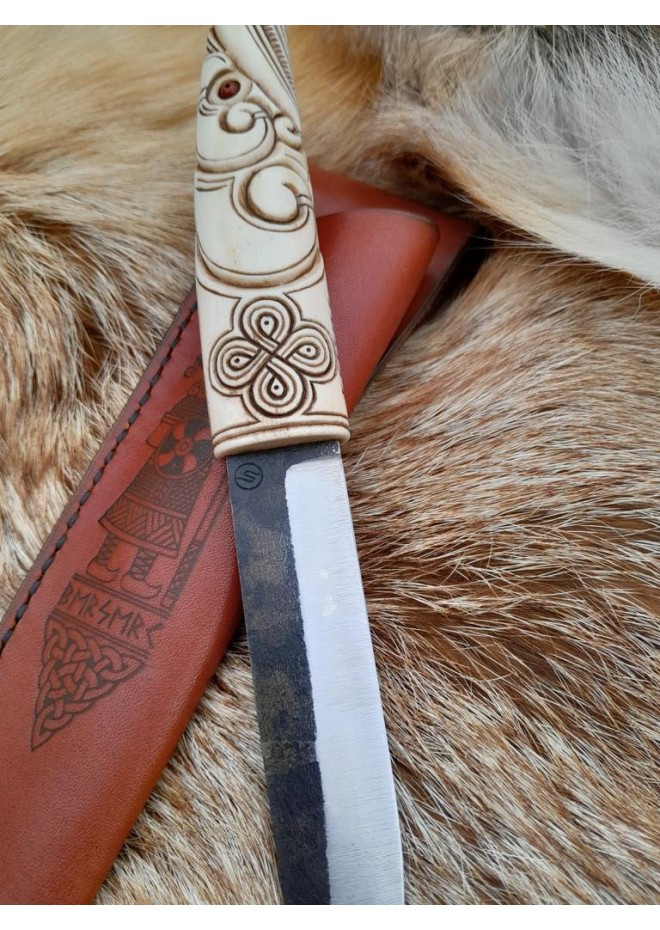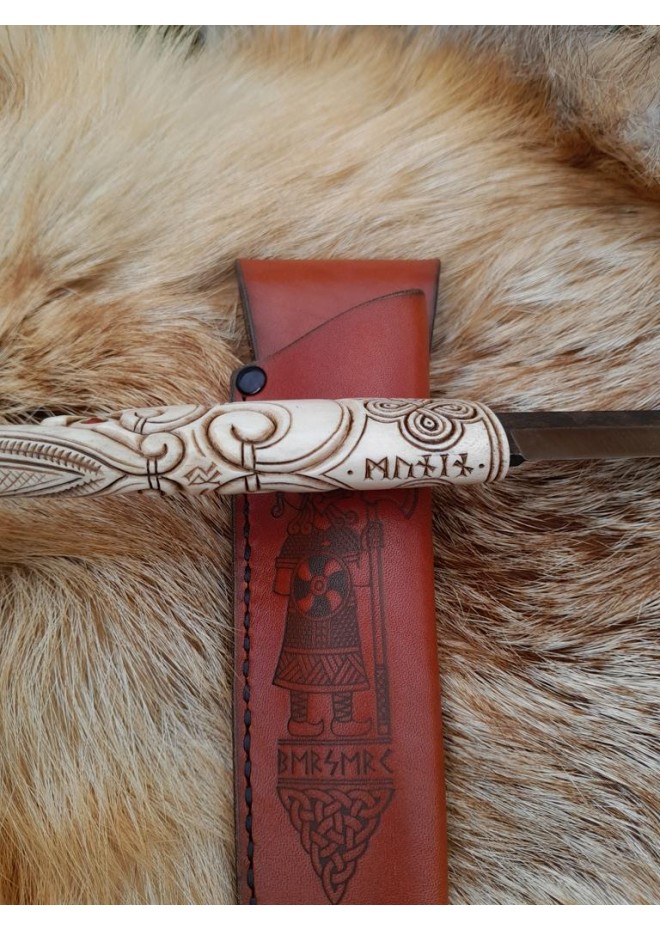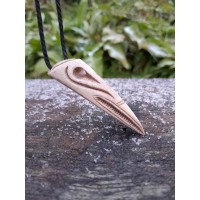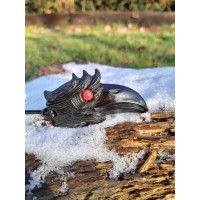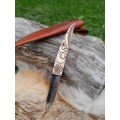Handmade Exquisite Norse knife "Odin’s Raven Munin".
Viking knife shaped like the head of Odin’s Raven inspired by Viking art.
Stunning design. The knife is made in a single copy for true connoisseurs of Viking art.
Each knife is a unique piece of art.
Our products are real masterpieces, which are distinguished not only by high craftsmanship but also by the fact that each copy is one of a kind. They are created with love and attention to detail, expressing not only the master's own creativity, but also a deep admiration for history and culture.
These unique objects become part of your world, which you can now hold in your hands. They carry the energy of past eras and become an unrivaled link between modernity and ancient traditions.
The beautiful grip has been carefully hand-carved out of moose antlers.
Steel Viking Knife with bone handle. The knife comes with a leather sheath.
Wonderful work in your collection and a unique gift. It can be used in camping, bushcraft, survival, hunting, fishing, etc.
The handle of the knife is cut by hand from moose antlers and decorated with natural stones.
No animals were injured. In November - December, the moose sheds its old horns. In April - May, the animals begin to grow new horns.
We find them in the forest, process them, and make unique things for you.
Hand-forged blade.
The knife blade is made of Carbon Steel D2. D2 - refers to steels with a high content of elements such as chromium and carbon, which gives it excellent cutting properties, relative corrosion resistance, and the required toughness.
The total length of the knife is about 25 cm (9.84 inches)
The total length of the blade is about 11.2 cm (4.41 inches)
Animals and birds are a significant feature in Celtic and Norse mythology.
The most significant ravens in Norse mythology were those owned by the Norse God, Odin. Nordic ravens played an important role in Odin’s life. According to the scriptures, the God once sacrificed an eye in exchange for wisdom, which meant he was heavily reliant on his own pet ravens to assist him in watching over the world.
Odin’s ravens were named Huginn and Muninn, translating to “thought” and “memory”. Through these creatures, Odin was said to watch over everything taking place in Miðgarð. Odin’s ravens also played a role in the journey to the afterlife. According to Viking culture, Odin was responsible for selecting half of the warriors killed in battle to join him in Valhalla.
Huginn and Muninn were said to tend to different soldiers slaughtered on the battlefield, before Odin chose them.
Even the Valkyries, said to be responsible for guiding men to the afterlife in Valhalla, are sometimes depicted as ravens or swans in epic poems.
Though ravens in Norse mythology had a deep connection with death, they weren’t necessarily seen as a bad omen. Rather, the Vikings saw these creatures as animals of prophecy, capable of seeing into the future, and understanding all things.
Indeed, a Viking may have seen a raven on the battlefield and thought it to be a sign Odin was watching over him. Even death didn’t mean the end for a Viking warrior, it was simply the beginning of a new journey, and a different kind of battle.
Ravens were often seen as symbols of this “circle of life”, and gave Vikings confidence in battle, reminding them of the glory awaiting after death.
There are no reviews for this product.











